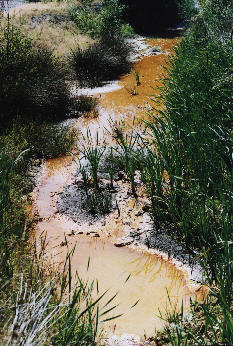Brussels -- Municipal solid waste (MSW) landfills, which consist of everyday consumer items, are potential long-term sources of emissions that could threaten the environment and human health if they are not managed carefully after closure. New research has presented a methodology to estimate future emission levels for closed MSW landfills and the impact of different aftercare strategies.
Kommunalunternehmen des Landkreises Bad KissingenGlobally, landfilling is the main method for disposing of solid waste. Highly industrialised countries, such as the US, the UK and Finland, extensively depend on landfilling their waste without any pre-treatment. As MSW landfills are possibly long-term sources of emissions, these sites need to be managed beyond closure. According to the EU Landfill Directive, which took effect in 1999, landfill operators have to continue managing sites after closure as long as the authority considers the landfill not likely to present a hazard to the environment any more.
Cap removed after 20 years
The researchers used an Austrian MSW landfill in Breitenau as a case study to evaluate emission levels from the site and to demonstrate the long-term environmental effects of installing a final cover to prevent emissions. This site was closed in 1989 and was capped with layers of gravel (0.2 metres) and sandy silt (0.9 metres). The temporary cap was removed after 20 years (in 2009) and a composite lining system was installed as the final cover. The study focused on one landfill compartment, which contained around 35,000 tons of MSW.
Leachate emissions decrease very slowly and may have environmental impacts for centuries to come. The approach to evaluate potential future emissions was based on a comprehensive assessment of the state of the landfill and included analysis of monitoring data, investigations of landfilled waste, and an evaluation of containment systems and site-specific factors, such as climate. Future emission levels were modelled and site-specific predictions of leachate emissions were presented.
Increased leachate after flushing
The results suggest that leachate concentrations increased considerably at the site when there was a change in the water flow pattern of the waste during final cover construction. Specifically, the concentrations of leachate pollutants chloride and ammonia-nitrogen increased from 200 to 800 milligrams per litre (mg/l) and 140 to about 500 mg/l, respectively. It is found that a period of intensive flushing after the change of the water flow pattern and before the final cover installation would have reduced the amount of leachable substances within the landfill and substance concentrations in the leachate would decrease to 11 mg/l of chloride and 79 mg/l of ammonia-nitrogen within 50 years.
Different aftercare strategies
A decline in water infiltration due to the installation of an impermeable top cover may lead to high substance concentrations in the leachate for centuries (above 400 mg of chloride per litre and 200 mg ammonia-nitrogen per litre), but with low associated annual emission loads (below 12 kg of chloride and 9 kg of ammonia-nitrogen per year). However, a gradual decrease in the cover?s performance may be expected without cover maintenance and would be associated with higher emission loads of a maximum of 50 kg of chloride and 30 kg of ammonia?nitrogen.
The methodology can be applied to other closed landfill sites to illustrate the effect of different aftercare strategies on the landfill pollution hazard. The researchers caution that emission models should be treated as tools to demonstrate the effect of different landfill conditions and not as deterministic forecasts of the future.
Original source: David Laner, D., Fellner, J. & Brunner, P.H. (2011) Future landfill emissions and the effect of final cover installation ? A case study. Waste Management. 31 (7):1522-1531
Quelle: EU commission

